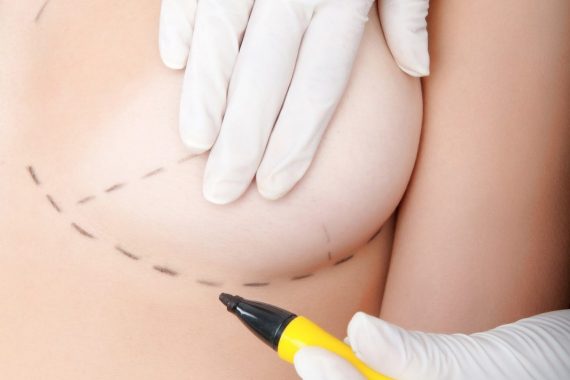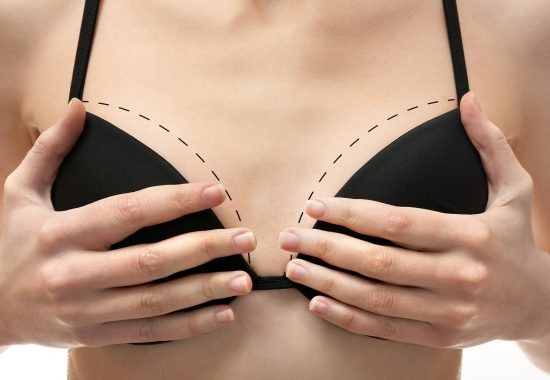Brustvergrößerung

What is Breast Augmentation surgery?
Among esthetic breast surgeries, breast augmentation surgery is the most preferred; the placement of appropriate bulky breast prostheses, the desired size of the breast, and symmetry to avoid prepared under the breast tissue. During breast augmentation surgery; patient selection, surgical technique selection and selection of the prosthesis to be used are performed properly, excellent results are achieved without problems.
For some reason, the development of the teenager in the transition period can not complete the expected breast development. These causes may be genetic, familial; hormonal, polycystic over syndrome, such as a number of hormonal diseases can be; or there is no reason.
After pregnancy and breastfeeding, due to excessive weight loss or after menopause, the volume of the breast may be lost or sagged.
Here is the breast enlargement surgery to be applied in these situations; it is possible to create breasts that are more proportional to the body, more fuller, more aesthetically pleasing, and increase the confidence of the person himself. Breast enlargement surgery can also be used to provide symmetry in the event of a developmental failure resulting in a breast smaller than one, or a breast due to breast cancer.
Aesthetic surgery is the surgery that gives the best results and makes the patients most happy.
Breast Augmentation Procedure
Step 1 – Anesthesia
Medications are administered for your comfort during the surgical procedure. Breast augmentation surgery is usually performed when the patient is under general anesthesia. It will be helpful if someone who trusts takes care of you in this process. Some patients can experience side effects of anesthesia such as throat ache, headache, dizziness, nausea, vomiting, shaking and muscle pain. These effects are temporary, and they slowly disappear as anesthesia leaves your system.
Step 2 – The Incision
Breast augmentation surgery starts by making a cut below the breast, on the armpit or around the areola (encircling the nipple). Incisions are made in inconspicuous areas to minimize visible scarring.
breast augmentation incisions; Incisions vary based on the type of breast implant, degree of enlargement desired, your particular anatomy and patient-surgeon preference.
Step 3 – Inserting And Placing The Breast Implant
After the incision is made, a breast implant is inserted into a pocket either. There are two different implant methods among breast augmentation methods. These methods are placement of implant below the breast tissue (subglandular) and below the breast muscle (submascular). You should decide with your surgeon on which method is the best for you.
- Under the pectoral muscle (a submuscular placement)
- Directly behind the breast tissue, over the pectoral muscle (a submammary/ subglandular placement)
- Dual-plane which is partly under the muscle (in the upper pole) and partly under the breast (lower pole). This procedure is more frequently used in women who have had children and have some droop to their breasts.
The method for inserting and positioning breast implants depends on the type of implant, degree of enlargement desired, your body type and your surgeon’s recommendations.
Step 4 – Closing The Incisions
Incisions are closed with layered sutures (that dissolve) in the breast tissue and with sutures, skin adhesive and surgical tape to close the skin.
Step 5 – See The Results
Breast augmentation surgery ends after the cuts are closed and bandaged. The results of breast augmentation are immediately visible. Typically they start high and then over time settle to a lower and more natural appearance.
It is crucial to follow the doctor’s orders about when and how to wear supporting clothes. Thus, recovery process is accelerated and the discomfort is minimized.

How Long Is the Recovery?
After completing the surgery, your breasts will be bandaged and you will be asked to wear an elastic bra that reduces swelling and offers support to the breasts. Most of the patients experience more pain and discomfort during the initial three days. Therefore, painkillers and antibiotics are prescribed to control this pain.
Usually, it takes about a week to get back to the normal routine and work. You can walk as an exercise during the recovery process but avoid rigorous activities like aerobics. You should not lift heavy loads during the first ten days of recovery. Also, it is advisable to take a week off from work. Your surgeon will also suggest some vitamins that will aid the process of recovery.

Breast Enlargement Candidates
Breast enlargement may be right for you if you:
- You are in good overall health
- You do not have any major medical problems (however, breast augmentation may be done for breast reconstruction after mastectomy)
- Are 18 years old or older (for silicone gel implants, 22 years or older)
- Are not pregnant or nursing
- Are of stable weight
- Are not planning a major weight change such as massive weight loss or pregnancy
- Have enough breast tissue to cover the implant
Not everyone is a good candidate for breast augmentation surgery.
You may not be a good candidate if:
- You have serious or ongoing medical issues
- Your breasts haven’t fully developed (women under the age of 22)
- You have unrealistic expectations
Risks And Complications
The vast majority of patients are delighted with the procedure although common early complaints include a change in sensation, bruising, swelling and there is often a slight difference between the two sides.
Uncommon early complications of surgery for breast augmentation include infection, haematoma, delayed healing, extrusion of the implant, seroma formation and thickened scar.
There are also uncommon risks of general anaesthesia such as respiratory/cardiac compromise and deep vein thrombosis.
Sensation usually changes following breast augmentation and the nipples may be hyper or hypo sensitive. It is uncommon to have permanent changes in sensation but can take a number of months to return back to normal.
Some patients can develop intermittent swelling following breast augmentation.
A combination of change to the breast and the implant can lead to the implant looking too high or too low and for the breast tissue to hang over the implant. Over time there may be a need for a breast augment revision.
